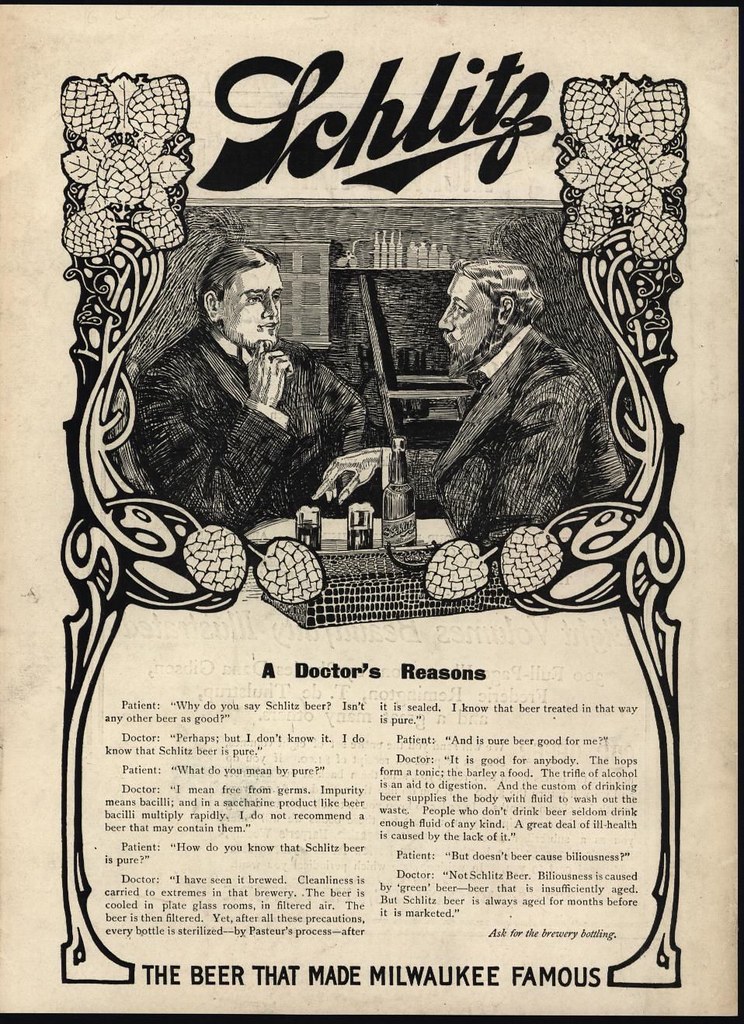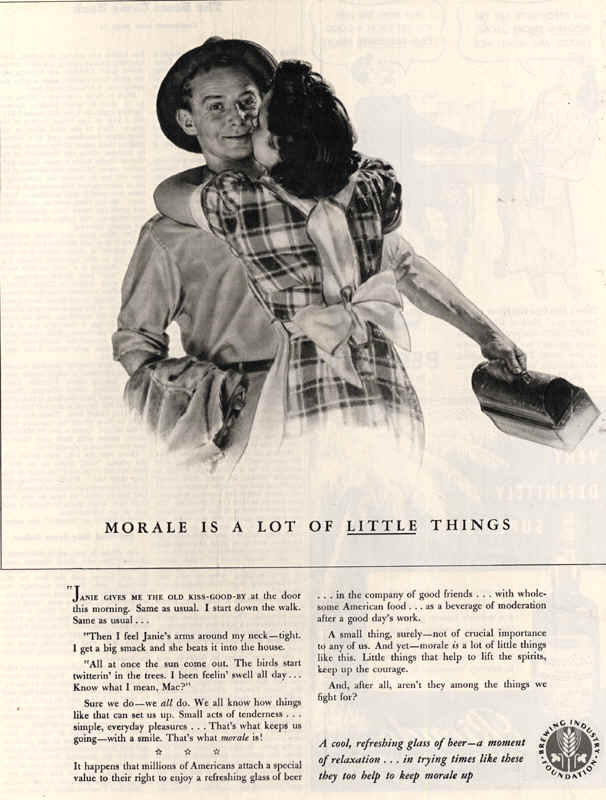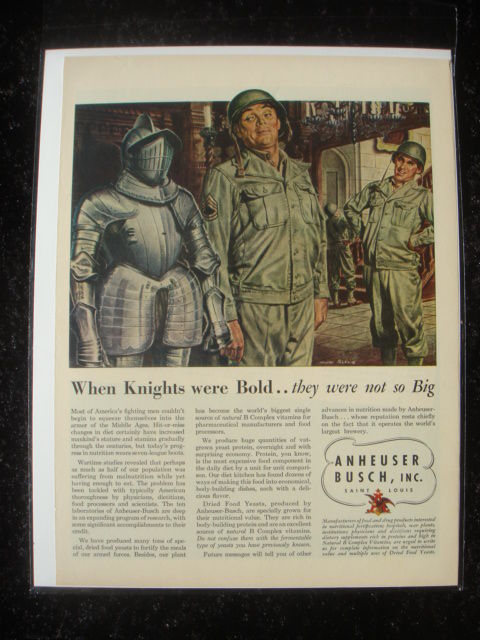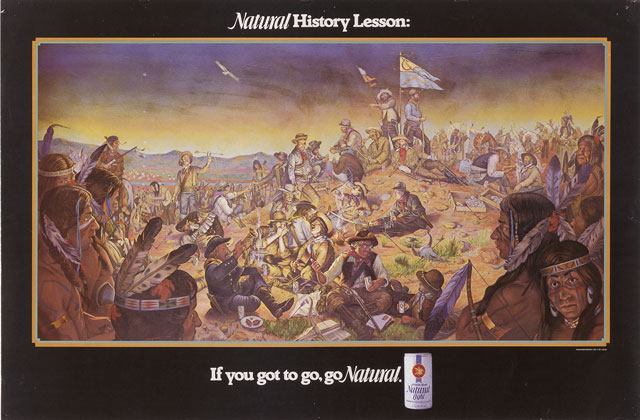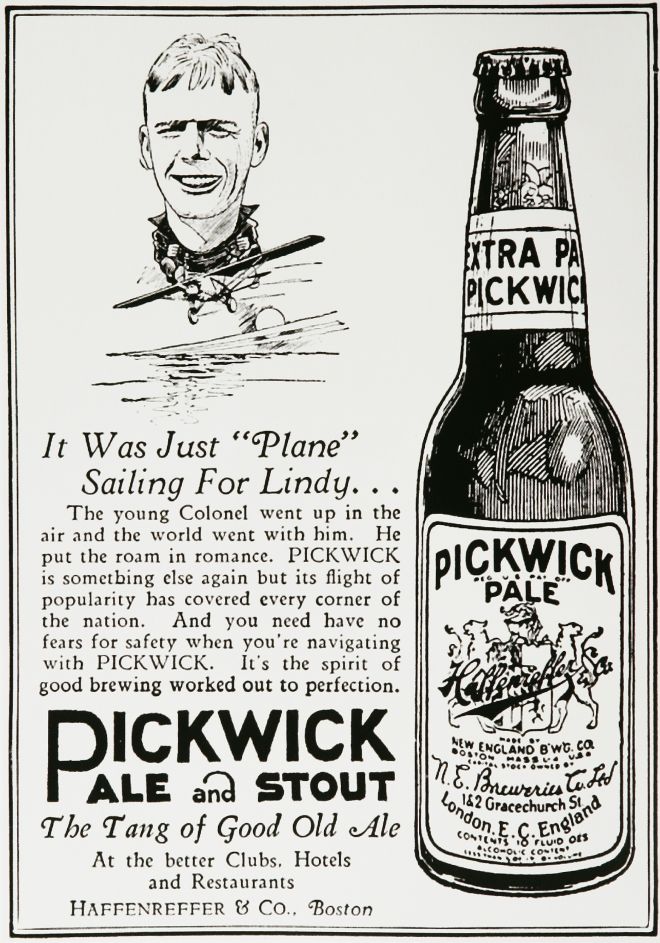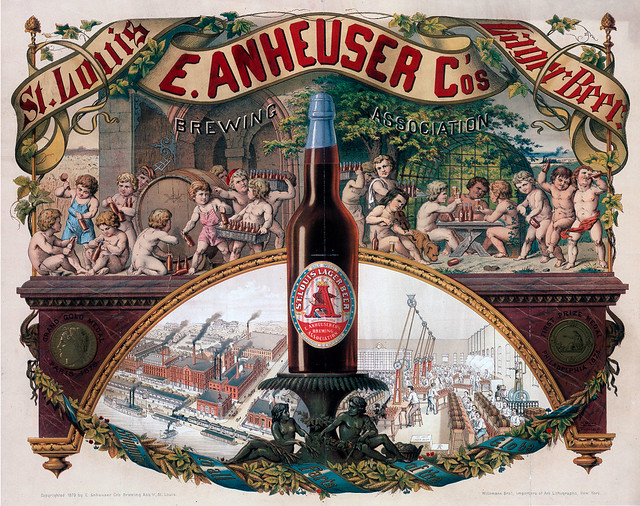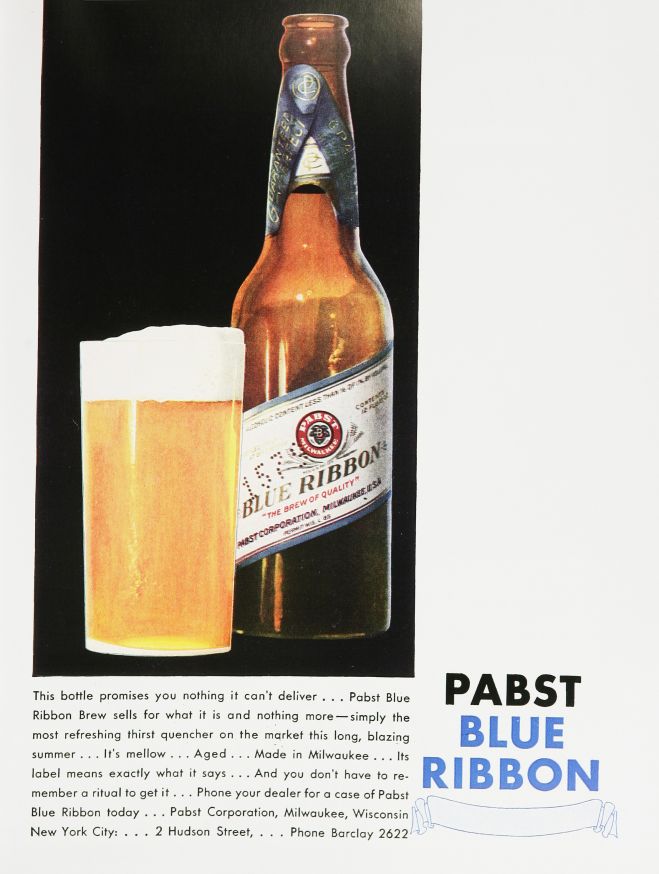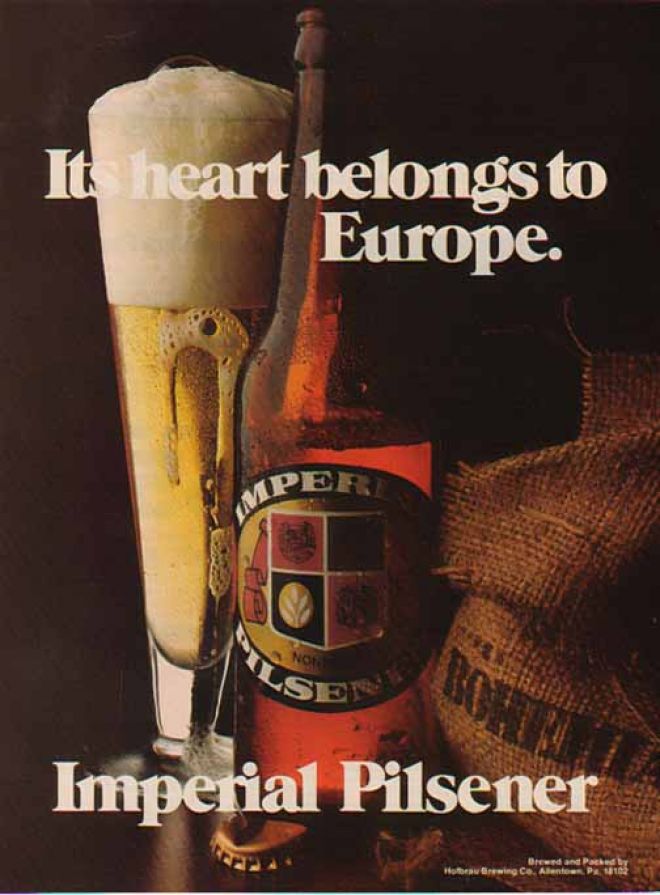
Saturday’s ad is for Schlitz, from 1904. It’s an unthinkable ad in today’s world, where health claims are strictly forbidden in beer advertising, even if they’re true. In a fictional, or hypothetical at best, conversation between a doctor and his patient, the physician unequivocally endorses Schlitz beer because it’s so pure. How does he know? Because he’s seen it being brewed, which of course makes no sense. But my favorite advice the doc gives is about why pure beer is good for you. “The hops form a tonic; the barley a food. The trifle of alcohol os an aid to digestion. And the custom of drinking beer supplies the body with fluid to wash out the waste. People who don’t drink beer seldom drink enough fluid of any kind. A great deal of ill-health is caused by the lack of it.” And no, it doesn’t cause biliousness, which is a “term used in the 18th and 19th centuries pertaining to bad digestion, stomach pains, constipation, and excessive flatulence.” Whew, dodged a bullet there.
